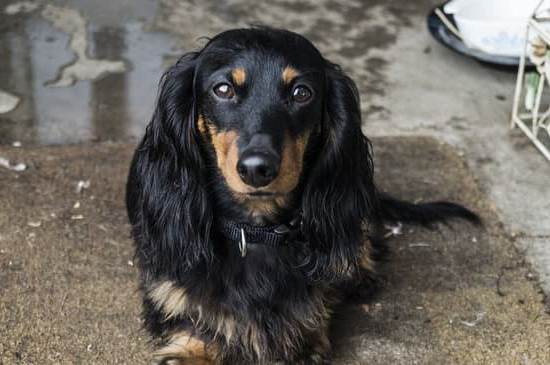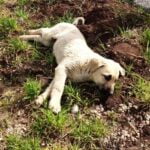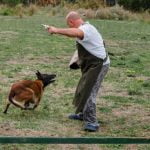Are you looking to train your puppy to be a protection dog? Knowing how to train a puppy to be a protection dog is essential for anyone seeking a loyal and protective companion. Protection dogs play a vital role in safeguarding their owners and property, making it crucial to understand the process of training them effectively.
When considering training your puppy to be a protection dog, it’s important to start with the right foundation. This involves selecting the best breed suited for protection work and establishing a strong bond built on trust and leadership. By implementing proper socialization, obedience training, and introducing basic protection training, you can set your puppy up for success in their role as a protector.
Throughout this article, we will explore the essential steps involved in training a puppy to become an effective protection dog. From understanding the role of a protection dog to advanced protection training techniques, we will delve into the process of creating a well-rounded and responsible protection dog. So, let’s begin by understanding the key aspects of training a puppy to be a protection dog.
Selecting the Right Breed
When it comes to training a puppy to be a protection dog, one of the most important decisions you’ll make is selecting the right breed. Not all dogs are suited for protection work, so it’s crucial to choose a breed that has the necessary traits and characteristics. Some of the best breeds for protection training include German Shepherds, Belgian Malinois, Rottweilers, and Doberman Pinschers. These breeds are known for their intelligence, loyalty, and natural protective instincts.
In addition to considering the breed, it’s essential to select a puppy with the right temperament for protection training. Look for a puppy that is confident, alert, and shows an interest in engaging with its environment. It’s also important to choose a puppy that exhibits courage and is not overly anxious or fearful in new situations. By selecting a puppy with these qualities, you’ll have a strong foundation for successful protection training.
Once you’ve chosen the right breed and temperament, it’s crucial to start socialization and obedience training as early as possible. This will help your puppy develop good manners and become well-adjusted to various environments and people.
Socializing your puppy with other animals and exposing them to different stimuli from a young age will also help create a well-rounded protection dog. By laying this early groundwork, you can set your puppy up for success as they progress through their protection training journey.
Socialization and Obedience Training
When it comes to training a puppy to be a protection dog, socialization and obedience training are crucial elements in establishing a solid foundation for this specialized work. Socialization is the process of exposing your puppy to different environments, people, and animals in a positive and controlled manner. This helps them develop good manners, confidence, and the ability to remain calm in various situations.
Obedience training, on the other hand, teaches your puppy basic commands such as sit, stay, come, and heel. This forms the groundwork for more advanced protection training.
To start socializing your puppy, take them on regular walks in different areas where they can meet new people and experience different sounds and smells. It’s important to ensure that these experiences are positive by rewarding good behavior with treats or praise.
Gradually expose your puppy to various environments such as parks, markets, and busy streets while closely monitoring their reactions. Additionally, enrolling your puppy in obedience classes led by professional trainers is an effective way to begin their education.
In terms of obedience training, consistency is key. Practice short sessions daily using positive reinforcement techniques such as clicker training or treats. Incorporate basic commands into their daily routine so they become accustomed to following instructions. By focusing on socialization and obedience training from an early age, you are laying the groundwork for successful protection work as your puppy grows older.
| Key Points | Details |
|---|---|
| Socialization | Exposing puppy to different environments in a positive manner |
| Obedience Training | Teaching basic commands using positive reinforcement techniques |
| Consistency | Regular short sessions for both socialization and obedience training |
Building Trust and Leadership
When it comes to training a puppy to be a protection dog, one of the most crucial aspects is establishing a strong bond and sense of trust between you and your canine companion. This foundation is essential for not only effective training but also for developing a healthy and respectful relationship with your puppy. Here are some key strategies for building trust and leadership with your puppy:
1. Spend quality time together: Dedicate time each day to bonding activities such as grooming, playing, and simply being in each other’s company. This will help your puppy develop a sense of security and attachment to you as their leader.
2. Consistent leadership: Set clear rules and boundaries from the beginning and ensure that they are consistently enforced. This will help your puppy understand their place in the pack hierarchy and look to you for guidance.
3. Positive reinforcement: Use rewards such as treats, praise, and playtime to reinforce good behavior. This will not only encourage obedience but also create positive associations with training exercises.
4. Obedience training: Teaching basic commands like sit, stay, come, and heel is an important part of establishing your role as the leader. Obedience training provides structure for your puppy and helps them understand what is expected of them.
By following these strategies for building trust and leadership with your protective dog in training, you can establish a solid foundation for successful protection work in the future. Remember that patience, consistency, and positive reinforcement are key components in this process.
Basic Protection Training
To begin training your puppy to bark on command, start by using a specific word or phrase that you want your puppy to associate with barking. Whenever your puppy naturally barks, say the chosen command word and reward them with a treat. Repeat this process consistently until your puppy begins to understand that the command word is associated with the action of barking.
In addition to teaching your puppy to bark on command, it’s important to expose them to different scenarios and environments where they may encounter potential threats. This can include introducing them to unfamiliar people, objects, or situations while closely monitoring their behavior. When your puppy displays signs of alertness or discomfort in response to these stimuli, acknowledge and reward their behavior. Over time, your puppy will learn to recognize and respond appropriately to potential threats.
It’s important not to rush the training process during this phase. Every dog learns at their own pace, so patience and consistency are key. By taking the time to properly train your puppy in basic protection skills, you’ll be laying a strong foundation for their development as a protection dog.
| Training Tips | Benefits |
|---|---|
| Use a consistent command word for barking | Improved communication between handler and dog |
| Expose your puppy to various stimuli | Enhanced ability for threat recognition |
| Be patient and consistent with training | Establishment of a solid foundation for future training |
Advanced Protection Training
Once your puppy has mastered the basics of protection training, it is time to move on to more advanced techniques such as bite work and controlled aggression. This stage of training will require patience, consistency, and a deep understanding of your puppy’s behavior and capabilities.
Here are some key steps to consider when introducing bite work and controlled aggression in the training of your protection dog:
1. Establish clear command cues: It is essential to have clear and distinct command cues for bite work. Start by teaching your puppy a specific command that signals them to engage in biting or holding onto an object or person. Use consistent verbal cues and hand signals to ensure that your puppy understands what is expected of them.
2. Gradual introduction to bite sleeves or toys: In order to introduce your puppy to the concept of biting and holding onto an object, start by using specialized sleeves or toys designed for this purpose. Encourage your puppy to grab onto the object with confidence and provide positive reinforcement when they do so successfully.
3. Seek professional guidance: When it comes to introducing controlled aggression in protection training, it is highly advisable to seek the guidance of a professional trainer with experience in working with protection dogs. They can provide valuable insight and support on how to properly channel your puppy’s natural instincts in a safe and controlled manner.
Remember that advanced protection training, particularly when it comes to bite work and controlled aggression, should always prioritize the safety of both the dog and their handler. It is crucial to approach this stage of training with sensitivity towards your puppy’s well-being and stay vigilant for any signs of stress or discomfort.
With dedication, patience, and expert guidance, you can effectively incorporate advanced protection training techniques into your puppy’s development as a reliable protection dog while fostering a strong bond based on trust and respect.
Handler Protection
When it comes to training a puppy to be a protection dog, one of the most crucial aspects is teaching them how to defend their handler in dangerous situations. This is not only important for the safety of the handler, but it also reinforces the bond and trust between the puppy and their owner.
It’s essential to remember that while this type of training is necessary for protection dogs, it should always be done responsibly and with the guidance of a professional trainer.
The first step in teaching your puppy handler protection is to ensure that they have a strong foundation in basic obedience and socialization. A well-socialized and obedient dog will be more responsive and better able to assess real threats from non-threats.
This can help prevent unnecessary aggression in everyday situations while still being able to protect their handler when needed. Additionally, building a solid relationship based on trust and leadership is crucial before starting any form of protection training.
Once your puppy has a strong foundation, you can begin introducing them to specific scenarios where they may need to protect you. Start with simple exercises such as having a “stranger” approach you in a non-threatening manner while commanding your puppy to watch or bark.
As your puppy becomes more comfortable with these exercises, gradually increase the complexity of the scenarios. It’s important to monitor your puppy’s response closely during these exercises and provide positive reinforcement for appropriate behavior.
As with any form of protection training, consistency is key in maintaining your puppy’s skills. Regular practice and continued education are essential for ensuring that your puppy remains capable of defending you in dangerous situations. It’s also important to seek guidance from experienced trainers who can provide expert advice on how to train a puppy to be a protection dog responsibly and effectively.
Maintaining Training
Consistency Is Key
Once your puppy has been certified as a protection dog, it is important to maintain their training to ensure they are always ready to perform their duties. Consistency is key in maintaining the behaviors and commands that your dog has learned during their training. This means regular practice sessions, ongoing obedience training, and reinforcement of their protective instincts.
Continued Education
Continued education for a protection dog goes beyond basic obedience and protection exercises. It involves keeping your dog mentally stimulated and physically fit through various activities such as agility training, advanced obedience drills, and scent work. Continued education also includes exposing your protection dog to different environments, sounds, and people to ensure they remain comfortable and confident in any situation.
The Role of a Trainer
As the owner of a protection dog, it’s important to continue educating yourself on how to train a puppy to be a protection dog. This might involve attending workshops, seminars, or working with an experienced professional trainer who specializes in protection dogs. By staying informed about the latest training techniques and methods, you can ensure that your dog receives the best possible guidance and instruction for their continued development as a successful protection dog.
By maintaining consistency and continued education in the training of your protection dog, you can ensure that they are always prepared to fulfill their role effectively while also living a fulfilled and happy life as your loyal companion.
Conclusion
In conclusion, training a puppy to be a protection dog is a serious responsibility that requires dedication, commitment, and knowledge. Throughout the process of training, it is crucial to establish a strong foundation of trust and obedience, as well as to foster leadership and respect between you and your puppy. Proper socialization and obedience training are essential for the overall development of a protection dog.
Additionally, advanced protection training such as bite work and controlled aggression should only be approached with caution under the guidance of a professional trainer. It is important to remember that owning a protection dog comes with the responsibility of ensuring their safety, as well as the safety of others.
Ultimately, responsible ownership of a protection dog involves not only proper training but also ongoing maintenance of their skills and continued education. By adhering to these principles, you can ensure that your protection dog will be a loyal and effective partner in keeping you and your loved ones safe. If you’re interested in how to train a puppy to be a protection dog, consider seeking out expert guidance from certified trainers who specialize in this area.

Welcome to the blog! I am a professional dog trainer and have been working with dogs for many years. In this blog, I will be discussing various topics related to dog training, including tips, tricks, and advice. I hope you find this information helpful and informative. Thanks for reading!





